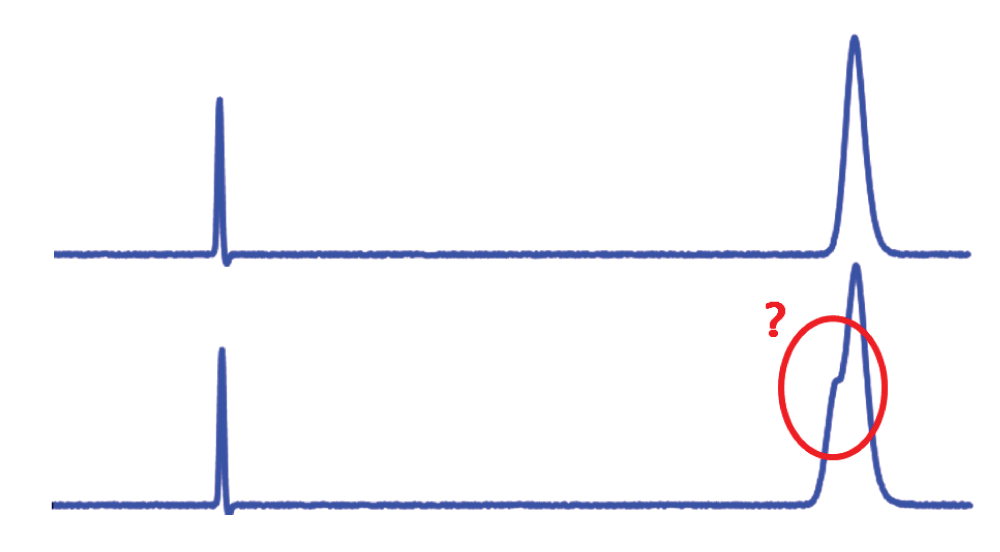Q: I am running an isocratic method with a 250 x 4.6 mm, 10 µm particle column at 1 mL/min with a 20% acetonitrile (ACN)/buffer mobile phase. I dissolve my sample in ACN and inject. Normally my compound of interest comes out at 7.7 min. I switched to a 250 x 4.0 mm column, keeping everything else the same, but now I see a distinct hump on the front of the peak. Is this another compound or am I doing something wrong?
A: When you change the diameter of the column, it is a good idea to scale all the volumetric settings in accordance to the change in column cross-sectional area. In your case, this would be (4.0/4.6)2 = 0.756 ≈ 75%. This would mean that if you reduce the flow rate by 25% to 0.75 mL/min I would expect to see the same retention times and same system pressure. You also should save 25% in your mobile phase use (and cost), which probably is worth the change just for the savings.

In general, this small change in column volume should not affect peak shape. However, there is one red flag in your method – the injection solvent. As a general rule, you can inject up to ≈15% of the peak volume without noticeable band broadening… if you inject in mobile phase. As the injection solvent gets stronger than the mobile phase, you have to be more careful. Because your 100% ACN injection solvent is much stronger than the 20% ACN mobile phase, I suspect that this is the source of your problems.
A quick, back-of-the-envelope estimate of tells me that the peak volume of your peak of interest is about 350 µL, which means that you should be able to inject about 50 µL on the 4.6 mm column if you injected in mobile phase. The 4.0 mm column would reduce this to about 40 µL. To get away with an injection of 100% ACN, I’d expect that you should keep the volume less than 20 µL maximum to keep from having problems.
So, based on the information you’ve given me, my guess is that you’re injecting in too much of too strong a solvent, and peak splitting is a classic symptom of this problem. Why is it working with the 4.6 mm column? You are probably right on the margin of peak splitting with that column and the small reduction in column volume pushes you over the edge. One easy way to check this would be to make a series of injections at 50, 40, 30, 20, 10, and 5 µL in 100% ACN. If my suspicions are correct, smaller injections will improve peak shape and increase the plate number (i.e., give you a narrower peak). A good practice is to build a factor of two safety margin into the method, so if 40 µL looks OK, inject 20 µL.
This blog article series is produced in collaboration with John Dolan, best known as one of the world’s foremost HPLC troubleshooting authorities. He is also known for his research with Lloyd Snyder, which resulted in more than 100 technical publications and three books. If you have any questions about this article send them to TechTips@sepscience.com




